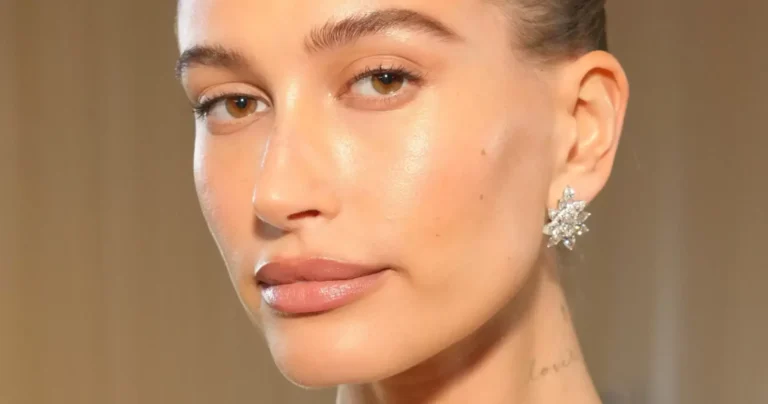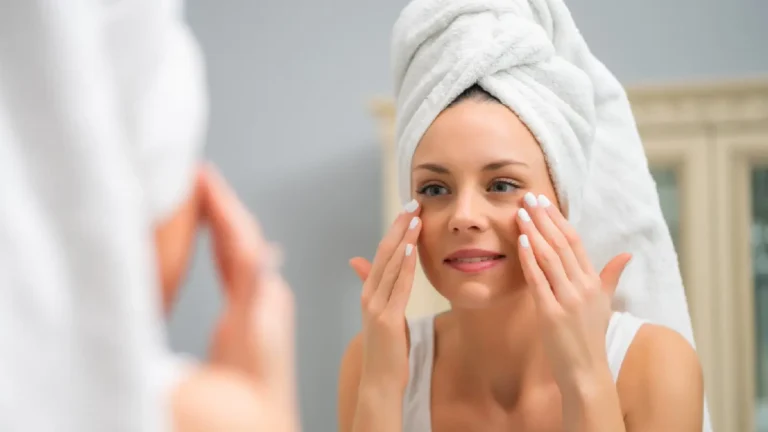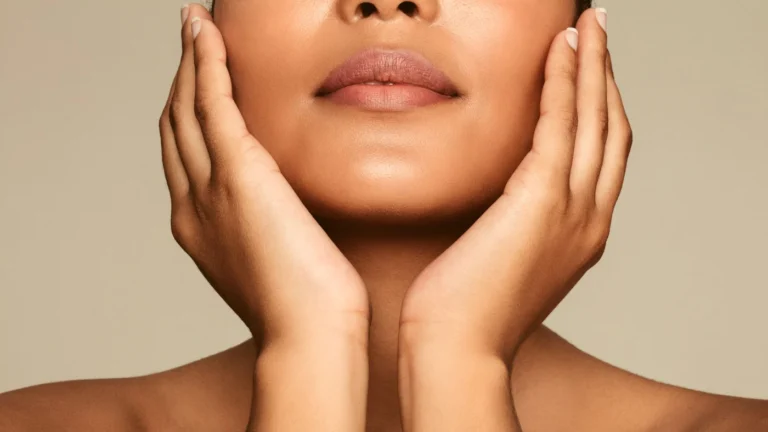Skin Tone Names: Most Beauty Tips for Your Skin Care
Forget the limitations of a few generic terms. Skin tone is a symphony of color, a tapestry woven with light and pigment. Understanding Skin Tone Names empowers you to find makeup that complements your natural radiance, clothes that flatter your unique hue, and the confidence to rock your own beautiful skin. So, grab your imaginary magnifying glass, and let’s delve into the fascinating world of Skin Tone Names!
What is Skin Tone?
Skin tone refers to the surface color of your skin. It’s determined by the amount of melanin, a pigment, produced by cells called melanocytes. Melanin acts like a natural sunscreen, protecting your skin from the harmful ultraviolet (UV) rays of the sun.
Here’s a breakdown of how melanin affects skin tone:
- More Melanin: Results in deeper skin tones, offering greater protection from UV rays.
- Less Melanin: Results in lighter skin tones, offering less protection from UV rays.
Skin tone comes in a beautiful spectrum, ranging from the palest shades to deep browns. It’s not just a single color though! Many people have a combination of tones and underlying hues, which brings us to the concept of “undertone.”
Understanding the Distinction Between Skin Tone and Skin Undertone
Skin tone and skin undertone are two distinct aspects of our complexion that contribute to our overall appearance. Here’s how they differ:
| Aspect | Skin Tone | Skin Undertone |
| Definition | The color you see on the surface of your skin. | The hidden hue beneath your skin’s surface. |
| Characteristics | What you see right away. | Not visible at first; needs a closer look. |
| Influencing Factors | Mostly influenced by how much melanin you have. | Affected by underlying colors in your skin. |
| Categories | Divided into fair, medium, tan, or dark. | Separated into warm, cool, or neutral. |
| Identification | Just look at your skin’s color. | Notice how colors look against your skin. |
This simplified chart breaks down the main differences between skin tone and skin undertone in an easy-to-understand and approachable manner. Understanding both aspects is key to choosing the right makeup, clothing, and accessories that complement your individual complexion.
Fitzpatrick Scale: Categorizing Skin Tone Names
The Fitzpatrick Scale is a widely used system for categorizing skin tones based on how they react to sun exposure. It’s a handy tool for identifying your skin type and deciding the level of sun protection you need.

let’s delve into the distinct characteristics of various skin tone names one by one:
Copper Skin Tone:
- Medium to deep complexion
- Warm, reddish undertones
- Think Rihanna or Deepika Padukone
- Makeup: Warm peachy or rosy foundations
Fair Skin Tone:
- Delicate and luminous (almost translucent to light peach)
- Cool pink, blue, or neutral undertones
- Think Emma Stone or Nicole Kidman
- Makeup: Lightweight foundations (sheer coverage) – pink, neutral, porcelain shades
Almond Skin Tone:
- Medium skin tone (bridges light & tan)
- Golden or peachy undertone (warm & inviting)
- Think Lucy Hale or Shay Mitchell
- Makeup: Warm yellow or peachy foundations
Caramel Skin Tone:
- Medium to deep complexion
- Warm, golden brown undertones (rich & luxurious)
- Think Gabrielle Union or Jessica Alba
- Makeup: Golden, caramel, or bronze foundations
Olive Skin Tone:
- Light to deep complexion with a greenish cast
- Cool, warm, or neutral undertones (versatile)
- Think Salma Hayek or Bella Hadid
- Makeup: Foundations with yellow or green undertones
Tan Skin Tone:
- Medium to deep complexion darkened by sun exposure
- Cool, warm, or neutral undertones (depends on base skin tone)
- Think Jennifer Lopez or Priyanka Chopra (after sun)
- Makeup: Foundations matching specific shade of tan (consider undertone) – hydrating formulas
Bronze Skin Tone:
- Warm, golden undertones
- Medium to deep complexion
- Think Priyanka Chopra or J.Lo
- Makeup: Golden or peachy foundations
Mocha Skin Tone:
- Warm, brown undertone
- Medium skin tone
- South Asian, Latin, or Mediterranean descent
- Think Zoe Saldana or Zendaya
- Makeup: Golden or caramel foundations
Medium Skin Tone:
- Wide range – light-medium to deep
- Consider specific undertones (neutral, warm, cool)
- Example: Light-medium olive (Lucy Liu) vs. Medium golden (Lupita Nyong’o)
- Makeup: Foundations with matching undertones (green/yellow for olive, yellow/peach for golden)
Ivory Skin Tone:
- Light skin tone with cool pink or blue undertones
- Elegant and refined
- Think Emma Watson or Elle Fanning
- Makeup: Foundations with pink or neutral undertones
Persian Skin Tone:
- Wide range of possibilities (fair to medium, cool to warm undertones)
- Think Nazanin Boniadi or Ariana Grande
- Focus on specific shade and undertone when describing
- Utilize terms from other categories (cool, warm, neutral)
These characteristics provide a general understanding of the unique qualities and makeup preferences associated with each skin tone. However, it’s important to remember that individuals within these categories can have their distinct features and preferences.
Understanding Skin Undertone Types
Your skin tone tells a story, but the secret to unlocking your most flattering colors and enhancing your natural beauty lies in your skin’s undertone. Whether you have cool, warm, neutral, or olive undertones, understanding your skin’s subtle hues can guide you to choose the perfect makeup, clothing, and accessories that complement your complexion and make you shine. In this guide, we explore the distinct characteristics of different skin undertone types, helping you unravel the mystery of your skin’s inner glow.
Different Skin Undertone Types
While the previous section offered Skin tone names , there’s a whole world of Skin Tone Names waiting to be explored. Here’s a glimpse into the vibrant tapestry of human complexions:
Cool Undertones: Imagine a refreshing summer breeze. That’s the vibe cool undertones give off. Look for names with hints of pink, blue, or even red in them. Here are some examples:
- Rose: A delicate pink for fair skin with a rosy glow.
- Lilac: A soft purple hue for light complexions with cool undertones.
- Mauve: A dusty purple-pink for medium skin with a cool cast.
- Rosewood: A deep reddish-brown for deeper complexions with cool undertones.
Warm Undertones: Warm undertones evoke sunshine and warmth. They often have hints of yellow, peach, or gold. Here are some examples:
- Peach: A soft, pinkish-orange for light skin with warm undertones.
- Honey: A golden yellow for light to medium complexions with warmth.
- Golden: A rich yellow-gold for medium skin with a warm cast.
- Amber: A deep, golden brown for deeper complexions with warm undertones.
Neutral Undertones: Lucky you! If you can rock both cool and warm colors, you likely have neutral undertones. These names often have a beige or brown base. Here are some examples:
- Nude: A versatile beige for fair to deep complexions with neutral undertones.
- Taupe: A grayish-brown for light to deep complexions with a neutral cast.
- Bisque: A creamy beige with a hint of pink for fair to medium skin with neutral undertones.
- Cocoa: A rich, deep brown for deeper complexions with neutral undertones.
Recommended Products for Skin Tone
The beauty industry has come a long way in recognizing and celebrating the rich tapestry of skin tones. Today, many brands offer products designed to enhance and complement diverse complexions. Here are some popular products that incorporate coconut oil, a natural and nourishing ingredient, to cater to various skin tones:
| Product Name | Brand | Features | User Reviews |
| Coconut Bliss | Glamoré | Moisturizes and brightens skin | “A game-changer for my dry skin!” |
| Bronze Glow | SunKissed | Provides a sun-kissed glow | “Love how it blends with my skin!” |
| Smooth Complexion | CocoLux | Evens skin tone and reduces dark spots | “My skin feels smoother and more radiant!” |
| Natural Glow | Earth’s Beauty | Enhances natural skin radiance | “It’s perfect for my skin tone!” |
| Island Breeze | TropicShade | Hydrates and smells amazing | “My go-to for a tropical vibe!” |
Final Thoughts:
FAQs
1. How can I determine my skin tone?
Determining your skin tone is easy. Check the veins on your wrist. If they appear bluish, you likely have cool undertones. If they’re greenish, you probably have warm undertones. Neutral undertones are a mix of both.
2. What makeup shades complement my skin tone?
The right makeup shades depend on your skin tone. For example, warm tones like reds and oranges work well with warm skin tones, while cool tones like pinks and purples complement cool skin tones.
3. Can coconut oil benefit all skin tones?
Yes, coconut oil is a versatile ingredient that offers moisturizing and nourishing benefits to all skin tones. It’s a natural and effective choice for skincare.
4. How can I care for my skin based on its tone?
Skincare should be tailored to your specific needs. For instance, those with fair skin should focus on sun protection, while individuals with darker skin may need to address hyperpigmentation concerns.
5. Are skin tone names standardized across the beauty industry?
Skin tone names may vary slightly from one brand to another, but the Fitzpatrick Scale provides a standardized reference point for categorizing skin tones. Brands aim for consistency, but there can be some variation.









